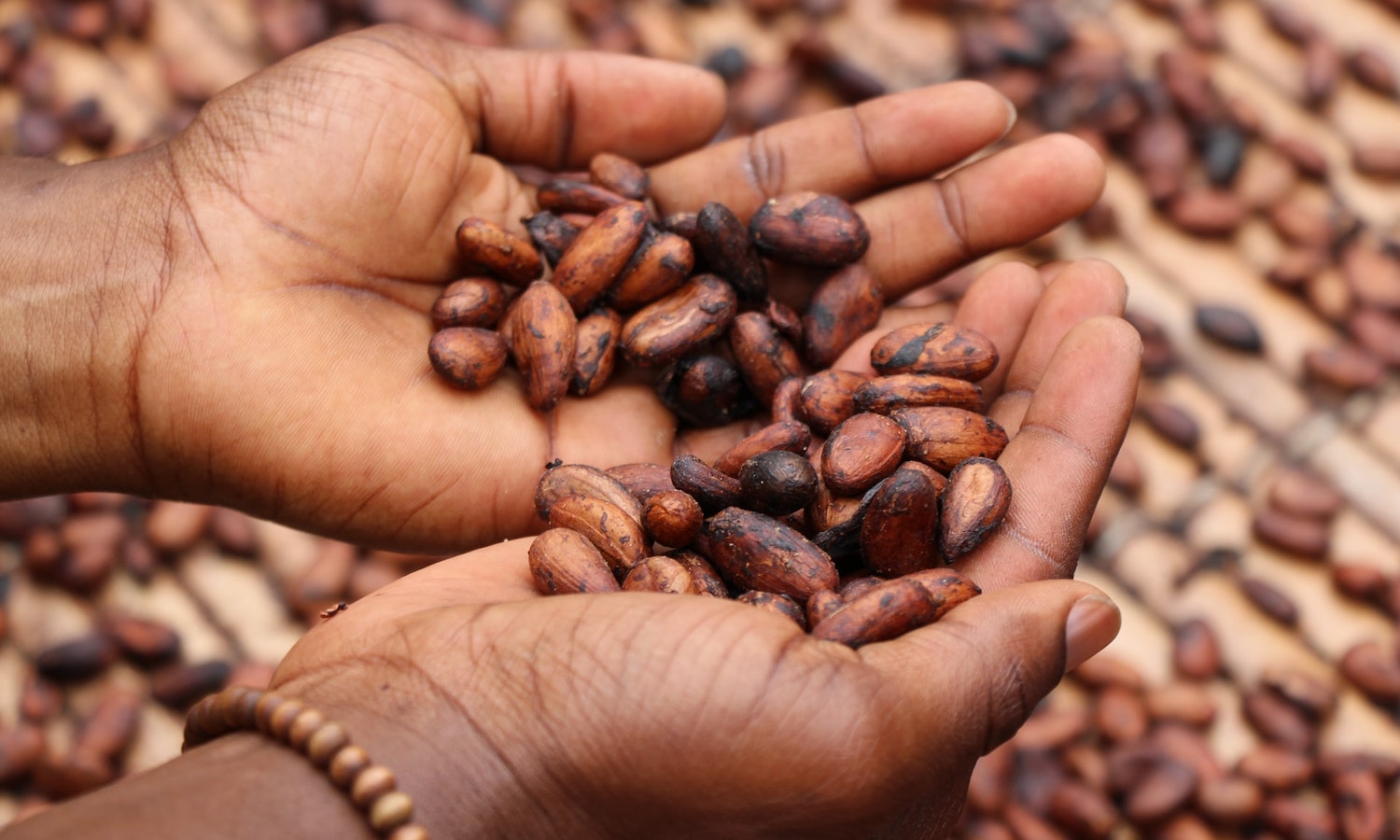A recent report by the NORC at the University of Chicago (NORC) finds that there are nearly 1.6 million children involved in child labor in the cocoa industry in Ghana and Côte d’Ivoire.
NORC conducted surveys with children aged 5 to 17 on three different occasions between 2008 to 2019. During this period, they found that cocoa production increased in Ghana and Côte d’Ivoire by 62 percent. While the number of child laborers remained stable in cocoa-growing households, households that grow cocoa in addition to other agricultural products, identified as agricultural households in the report, witnessed a 14 percent increase from 31 to 45 percent.
Kareem Kysia, the project director for the NORC report tells Food Tank that many of the farms involved with cocoa production are smallholder farms. And many lack the financial resources to hire outside workers, which compels them to rely on their children for assistance.
While all child labor interferes with a child’s ability to receive an education, the report explains that a percentage of cases are considered hazardous child labor. This involves the use of sharp tools and agrochemicals. The NORC report finds that between both countries 43 percent of child laborers in agricultural households were engaged in hazardous child labor.
Alex Ferguson, the Vice President at the World Cocoa Foundation (WCF) tells Food Tank that child labor is correlated with poverty. Ferguson also says that limited access to schools and a lack of child protective services enable child labor practices in West African cocoa production to continue.
But Kysia suggests education as a possible solution to address child labor in the cocoa industry. “If they’re in schools, they’re not on farms,” says Kysia.
The governments of Côte d’Ivoire and Ghana are implementing education reforms, such as extending free education and making school attendance mandatory, to combat child labor. According to the report, school attendance among children from agricultural households increased from 58 to 80 percent in Côte d’Ivoire and 89 to 96 percent in Ghana.
The report also finds that in areas where community mobilization and interventions from schools and state governments occurred, the rate of child labor was approximately 17 percentage points lower than the rate of child labor among households in the comparison communities.
To support this progress and help eliminate child labor in the cocoa industry, chocolate companies, nongovernmental organizations (NGOs), civil society organizations, and other stakeholders are working together on other initiatives.
Ferguson tells Food Tank that the government of Côte d’Ivoire intends to partner with the Jacobs Foundation, a charitable foundation working to help children access education, to establish a primary education facility for 5 million children.
Additionally, in 2019 chocolate companies from around the world invested US$65 million in education, community development, and other social activities to eliminate child labor.
But Ferguson says companies alone cannot solve this problem. He tells Food Tank that WCF is assisting with the development of multi-stakeholder partnerships and “engagement in policy dialogue with the government,” to help chocolate companies, governments, and international organizations address child labor in the cocoa industry.
Kysia agrees that it will take the action of multiple stakeholders to eliminate child labor. “Only once everyone is actively involved will we see real change.”
Photo courtesy of Etty Fidele, Unsplash















